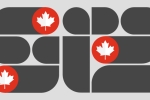
While keeping a close eye on what a second wave of the COVID-19 pandemic will mean for Canada’s economy, we’ve continued to stay connected to financial services executives to understand their priorities during these uncertain times. Those we’ve spoken to are concerned about the impact on their clients, particularly as they brace for second-order effects, such as increasing debt, loan defaults and higher credit risks, over the coming years.
In the midst of weathering the current storm, it’s also important to accelerate the deployment of capabilities and the transition to new operating models to meet the challenges arising out of the COVID-19 pandemic.

There are seven macro trends that will have an impact on the future of financial services:
Low interest rates will continue wreaking havoc on margins and business models.
The COVID-19 recession and asset impairments will reduce risk-bearing capacity for regulated industries to support the real economy as it enters recovery.
Alternative providers of capital are set to become an even more important part of the global financial system.
COVID-19 will not delay—and may accelerate—the implementation of current and planned regulatory measures.
De-globalization may further align the size of financial institutions to the GDP of their home countries, while continued offshoring will increase operational risk.
Organizations face unrelenting pressure to boost productivity through the digitization of the business and the workforce.
The client-driven shift to a platform- and ecosystem-based financial services industry will create a new wave of disruption and disintermediation.
A framework for the future
To address the impacts of these trends, we’ve developed a framework with four key categories to consider as you prepare for tomorrow.
1. Repair the damage
The economic impact of COVID-19 has only just begun. Financial institutions will need to take stock of their potential risks and put a plan in place to repair any immediate damage and get ahead of future challenges. In Canada, the immediate focus is on credit risk and loan loss provisions. Banks’ allowances have increased by over 70% on average during the pandemic while exposures with a ‘significant increase in credit risk’ are up 82%, suggesting that future defaults are likely to follow.


2. Rethink your processes
In Canada, banks are paying particular attention to emerging issues like commercial lending transformation. With nearly 50% of financial institutions in the Canadian market still originating commercial loans using emails and spreadsheets, properly analyzing the portfolio and detecting when a client is demonstrating signs of weakness is difficult. Rethinking the commercial lending process has been shown to reduce the lending cycle by 25~33% on average. We’re also seeing commercial banking businesses revisit the way they look at the risks inherent in their lending portfolios. The market is exploring ways to expand the use of forward- looking market simulation-based modelling to supplement the “proven past financial performance” based modelling techniques.
3. Reconfigure the operating model
Many of you are beginning to evaluate the learnings from the pandemic and reimagine your operating model. This includes long-term remote working scenarios and looking at an increased focus on efficiency and productivity and resiliency. For example, some are looking to change the operating models across their risk and compliance functions, or lines of defence, to optimize processes, consider more cost-effective staffing models and introduce digitization and automation to improve effectiveness while reducing cost.
Others are responding by launching or accelerating digital upskilling programs. Whether the focus is on back office, non-client-facing functions or starting from the top with the CEO and direct reports, for any organization that does decide to invest in an upskilling program, it's important to have clear sponsorship and alignment around the expected business outcomes.
You may also be re-evaluating your partnerships, including with fintechs, and thinking more about concepts like open banking and how the financial services ecosystem might evolve in coming years. In recent months, we’ve seen some movement on setting industry standards around secure financial data exchange. Financial Data Exchange (FDX), a non-profit organization focused on this issue, entered the Canadian market in late July, and over 30 financial institutions joined them in developing a common standard for secure consumer-directed financial data sharing. These are positive signs of the industry’s willingness to help drive the definition of what open banking will mean in Canada.

4. Report the results
As your stakeholders demand more accountability from you, complete and accurate reporting will need to move up on your agenda. Amid heightened scrutiny, the focus will increasingly turn to transparency on critical topics such as climate change, diversity and inclusion and good corporate citizenship. It will also be important to focus on perhaps the most important attribute of any successful financial institution in the future: being able to articulate your unique culture, purpose, story and value to society.
You can read more about the macro trends and our framework in The Future of Financial Services: Securing your tomorrow, today.

Contact us






















